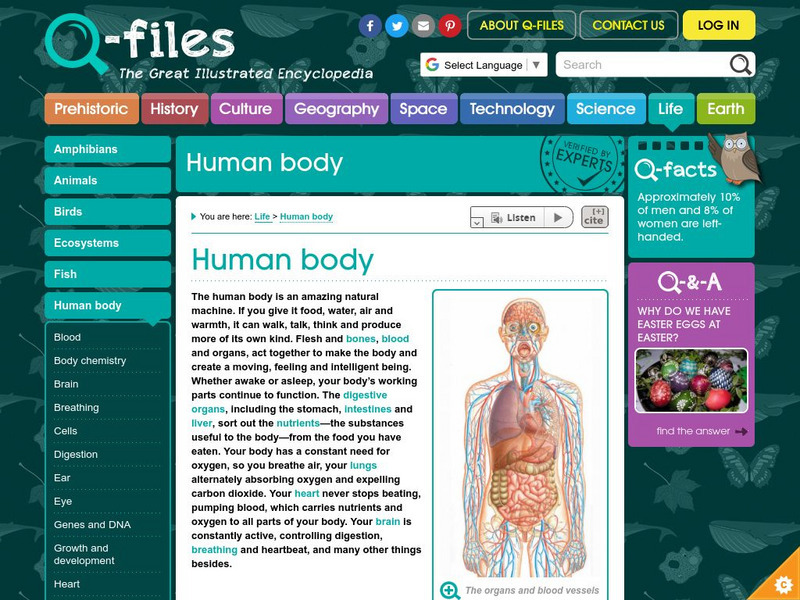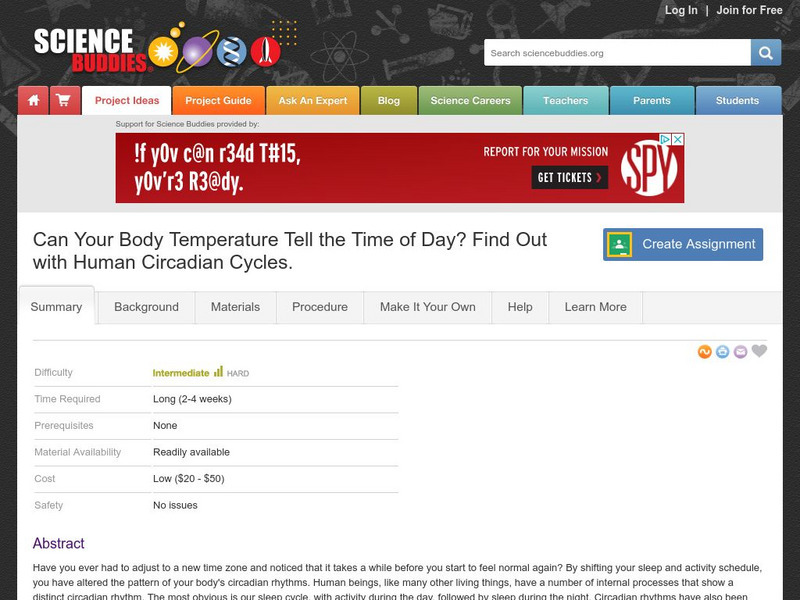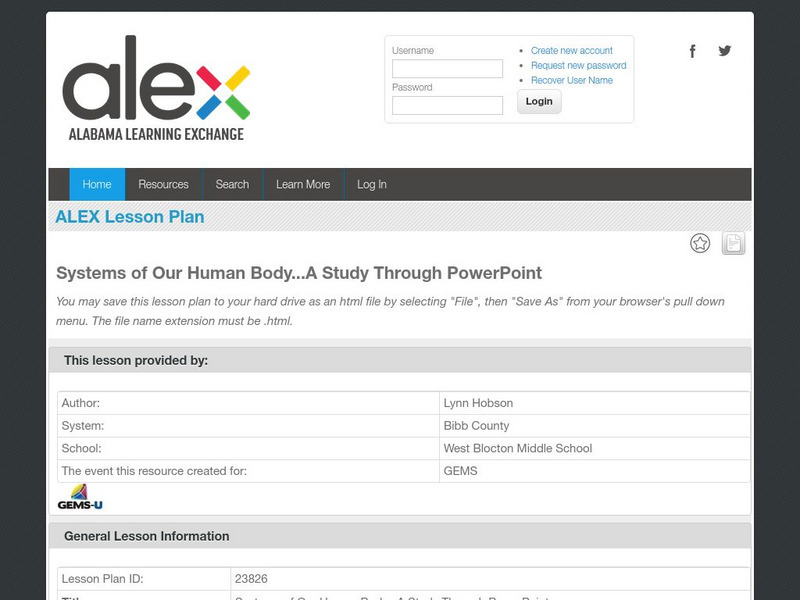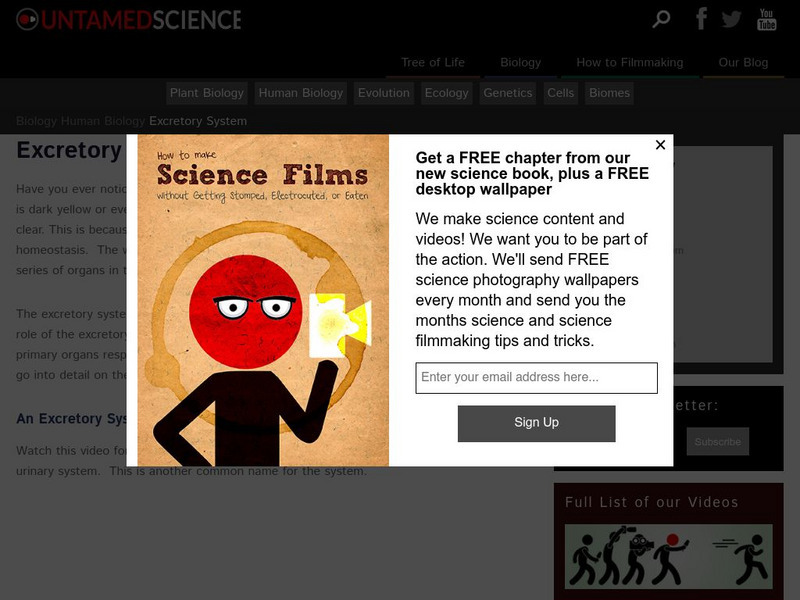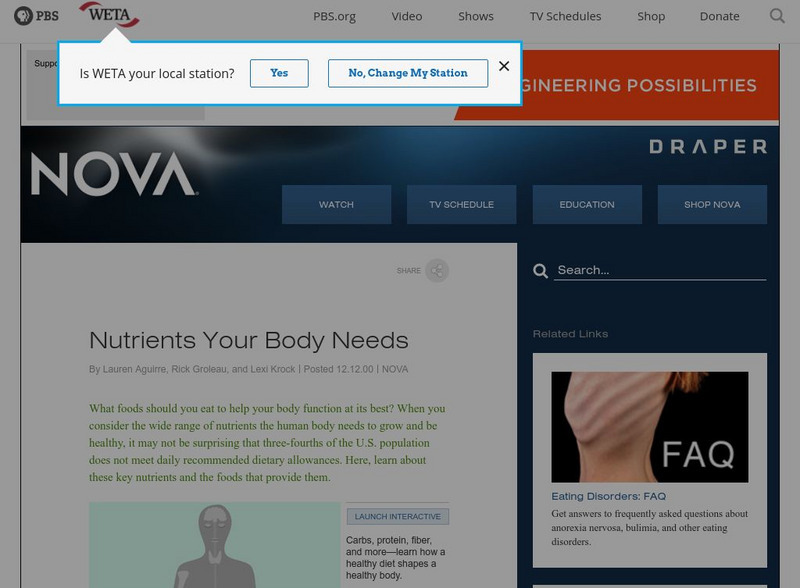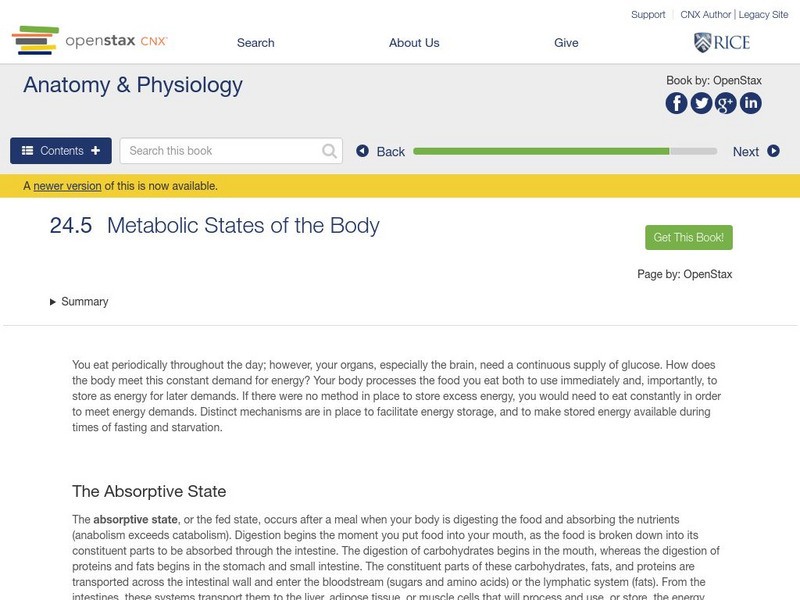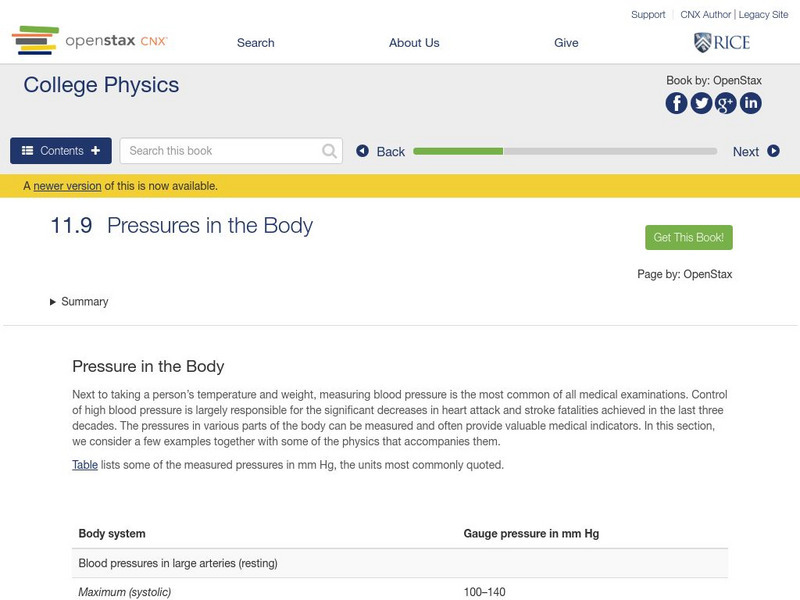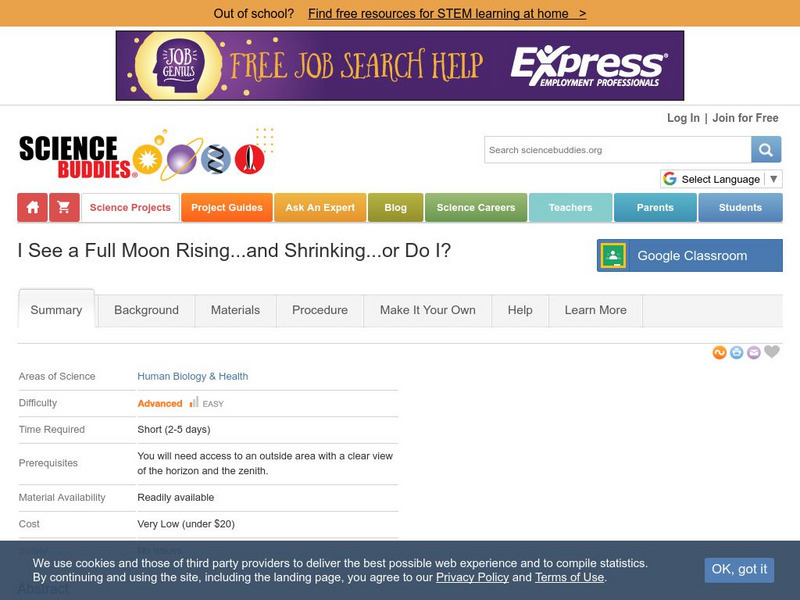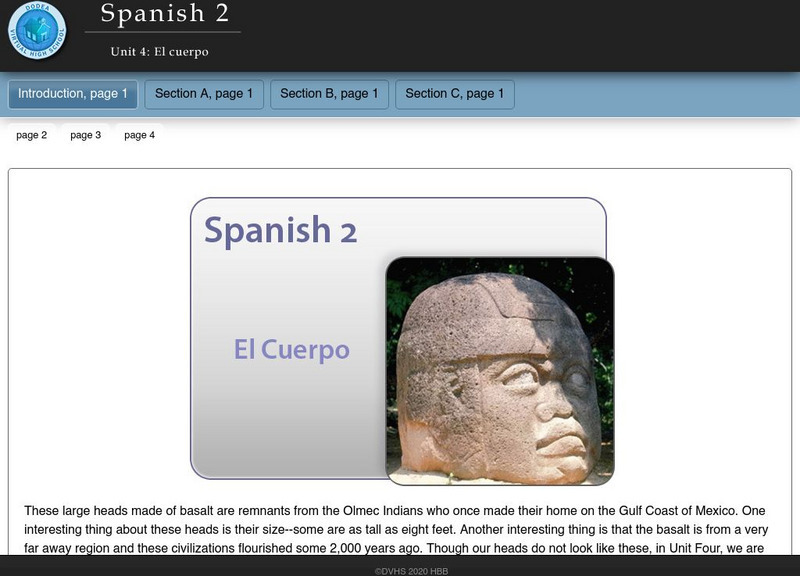National Cancer Institute at the National Institutes of Health
Seer Training Modules: Introduction to the Human Body
Self-guided learning activity where students learn about the functions, processes, and anatomy of the human body. There is a short quiz at the end of the lesson to check for understanding.
Open Curriculum
Open Curriculum: Organization of the Human Body
An illustrated article which helps students understand the levels of organization of the human body.
Science Buddies
Science Buddies: Can Your Body Temperature Tell the Time of Day?
If you have ever had to adjust to a new time zone, you have noticed that it takes a while before you start to feel normal again. By shifting your sleep and activity schedule, you have altered the pattern of your body's circadian rhythms....
TED Talks
Ted: Ted Ed: Why Are Human Bodies Asymmetrical?
Leo Q. Wan takes us into the human body to show how biological asymmetry can be quite beautiful. [4:18]
Alabama Learning Exchange
Alex: Systems of Our Human Body: A Study Through Power Point
This is a student-led exploration of the systems of the human body, through technology. Students will work cooperatively to develop a PowerPoint presentation that will thoroughly explain each system. Systems included are: circulatory...
Untamed Science
Untamed Science: Biology: Human Biology: Excretory System
Explore how the human body rids itself of wastes with the function of the kidneys.
Illustrative Mathematics
Illustrative Mathematics: G Mg How Many Cells Are in the Human Body?
About how many cells are in the human body? The purpose of this task is for learners to apply the concepts of mass, volume, and density in a real-world context. Aligns with G-MG.A.2.
Other
Temperature of a Healthy Human (Body Temperature)
This site has several charts with explanations why your body temperature might not be 98.6 degrees fahrenheit.
Open Curriculum
Open Curriculum: Homeostasis and Regulation in the Human Body
This article helps students identify the process by which body systems are regulated so that they remain stable.
OpenStax
Open Stax: Anatomy & Physiology: Body Fluids and Fluid Compartments
Learn about the chemical and physical characteristics of the fluids that make up the human body.
PBS
Pbs Nova Teachers: Dying to Be Thin: Body Needs
Find out what the human body needs to function at its best, and why.
University of Florida
Florida Museum of Natural History: My Body My Senses
This teacher's guide introduces children to the human body and the five senses and covers the major body parts and what they do. Children also will use their five senses to learn about the world.
OpenStax
Open Stax: Anatomy & Physiology: Metabolic States of the Body
Students describe what defines each of the three metabolic states of the human body: the absorptive state, the postabsorptive state, and starvation.
OpenStax
Open Stax: Pressures in the Body
From a chapter on Fluid Statics in a Physics textbook. This section of the chapter covers the different types of fluid pressures in the human body and how they are measured. Includes problems and exercises.
OpenStax
Open Stax: Reforms to Human Health
From a chapter on "Antebellum Idealism and Reform Impulses," this section explains the different reforms aimed at improving the health of the human body and describes the various factions and concerns within the temperance movement.
Woods Hole Oceanographic Institution
Woods Hole Oceanographic Institution: Radiation and Human Health
Interactive explores the exposure of radiation to the human body and its effects both indirect and direct. Find out the sources of radiation that people are exposed to daily.
Mocomi & Anibrain Digital Technologies
Mocomi: Human Body Joints and Movements
Discover what enables movement in human beings while learning about the different types of joints.
Science Buddies
Science Buddies: I See a Full Moon Rising, and Shrinking, or Do I?
The moon appears bigger at the horizon just as it is rising over the treetops, than it does later in the evening when it is overhead. This is because our perception of its size changes based on where it is in the sky. In this human...
Science Buddies
Science Buddies: Fast Food: Can Peppermint Improve Reaction Times?
Did you know that some teachers give their students a peppermint candy on state testing days? Is it to give the kids sweet-smelling breath? Or are the teachers hoping for something more on the important testing day? In this human biology...
TED Talks
Ted: Ted Ed: Why Do Our Bodies Age?
Human bodies aren't built for extreme aging: our capacity is set at about 90 years. But what does aging really mean, and how does it counteract the body's efforts to stay alive? Monica Menesini details the nine physiological traits that...
TED Talks
Ted: Ted Ed: How Does Your Body Know What Time It Is?
Being able to sense time helps us do everything from waking and sleeping to knowing precisely when to catch a ball that's hurtling towards us. And we owe all these abilities to an interconnected system of timekeepers in our brains. But...
Department of Defense
Do Dea: Spanish 2: Unit 4: El Cuerpo
In this fourth unit of an intermediate Spanish course, students learn about and present information about the art, music, and literature of a Spanish-speaking country in Central America or the Caribbean. They also develop vocabulary...
Smithsonian Institution
National Museum of Natural History: What Does It Mean to Be Human, Human Characteristics
Explore walking upright, tools and food, bodies, brains, social life, language and how humans ultimately changed the world. Excellent charts, pictures and videos accompany easy-to-understand text on the earliest humans.
Other popular searches
- Human Body Parts Pictures
- Human Biology
- Human Body Anatomy
- Human Body Systems
- Human Body Parts
- Human Body Systems Diagram
- Human Anatomy
- Human Body Bones
- Human Body Anatomy Sketching
- Human Body System Handouts
- Human Biology Organ Systems
- Human Body Grade 2

